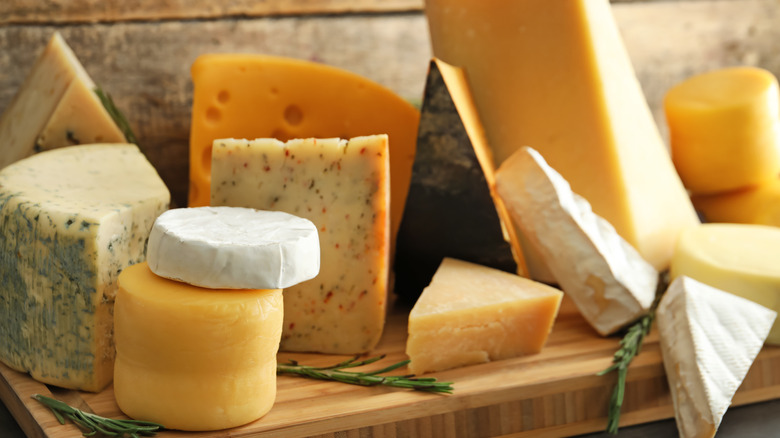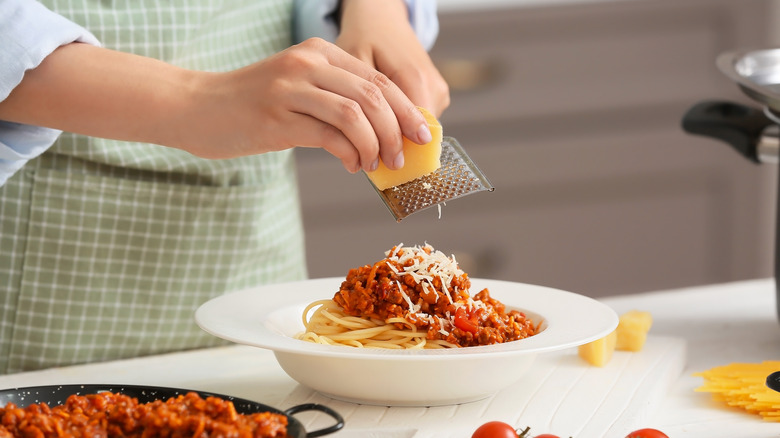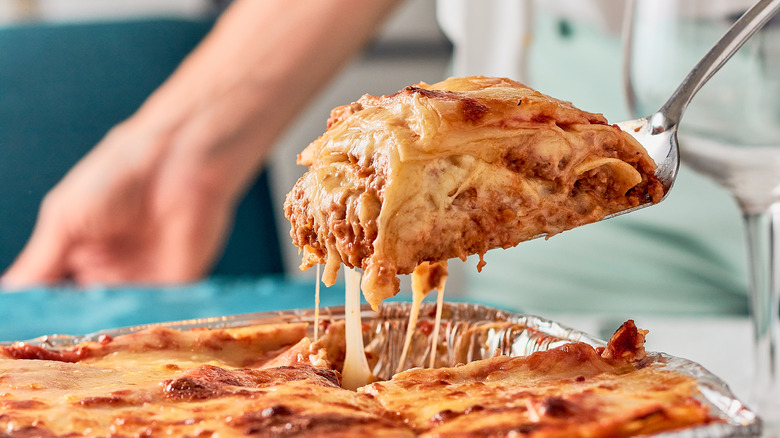What To Consider When Choosing The Right Cheese For Your Pasta
Italian food is one of the most popular cuisines in the world, and it's easy to see why. Two of its most famous features, cheese and pasta, are delightful when consumed separately and utterly delicious when eaten together. It doesn't matter whether you're celebrating or commiserating; there's nothing quite like the savory hit of cheese combined with the pillowy softness of pasta to bring joy to your soul.
However, the kind of cheese you use depends on what type of pasta dish you're cooking. And no, we're not necessarily talking about pasta shapes in this case because regardless of what you may think, pasta shape does not affect the taste. Rather, we're talking about choosing whether the cheese goes into the pasta dish on the stove or at the table.
This time we're differentiating cheese by its texture and dividing it into three categories: soft cheeses, hard cheeses, and those semi-soft, semi-hard cheeses in between. Generally speaking, softer cheeses get cooked into pasta dishes, while harder cheeses are grated onto the pasta when serving.
Stirred in the sauce or grated on top?
If you want a properly cheesy sauce, look to softer, creamy cheeses like ricotta, feta, and gorgonzola. While hard cheeses can be cooked into sauces, they tend to split at higher temperatures, giving you a greasy mouthfeel. Creamy cheeses work better for sauces as they emulsify well; thus, the flavor is distributed more evenly throughout. A good example is this cream cheese and olive spread that doubles as a pasta sauce.
For cheesy toppings, hard cheeses are where it's at. Usually grated atop right before serving, hard cheeses give a salty, umami kick without overtaking the pasta with a dairy flavor. This works particularly well with tomato-based sauces like marinara or bolognese. We also like to pair seafood-based pastas with cheese, even though some think it shouldn't be done. The combination of seafood and cheese gives you a double dose of savoriness that keeps you coming back for more.
Bake that cheese
For cheeses that fit into the semi-hard and semi-soft categories, these are the ones perfect for melting into baked kinds of pasta. Think of the stretch of mozzarella, which is our preferred cheese for a classic lasagna recipe. Cheddar and jack cheese work extremely well in a pinch, like in this cheese and macaroni pie recipe. These cheeses lend themselves best for that iconic cheese pull while providing a pleasurable chewing texture.
Other than texture, considerations you can make when choosing the right cheese for your pasta include its provenance. Is the cheese made from cow, goat, or another type of milk? The different sources influence the flavor of the cheese — those from cows and buffalos tend to be a little milder in flavor compared to those from smaller ruminants. Milder cheeses go well with dishes with other flavors, and stronger cheeses taste best when they're part of the dominant flavor, like the goat cheese in this creamy pesto pasta recipe.


